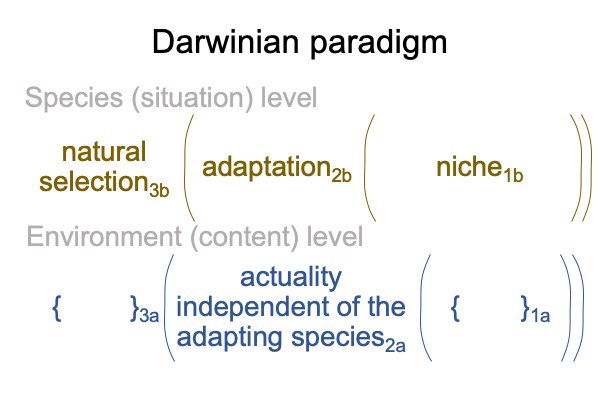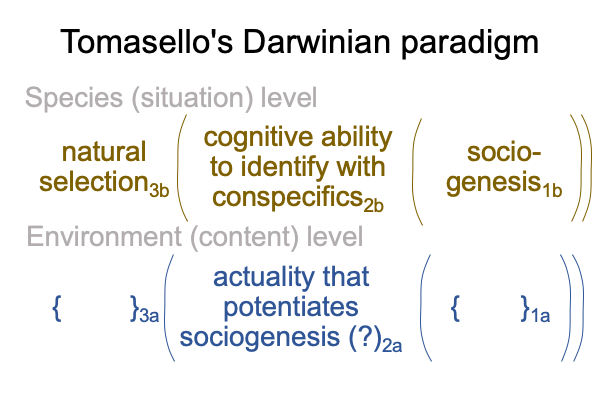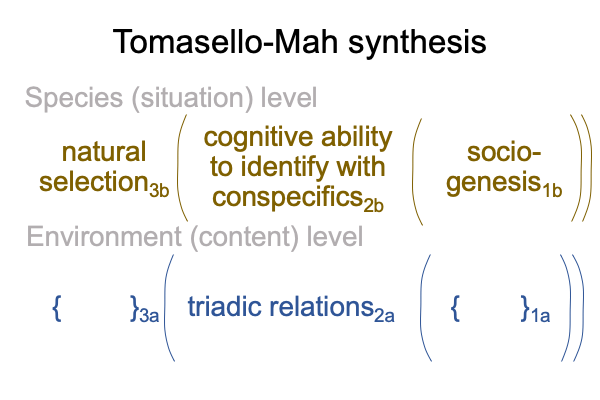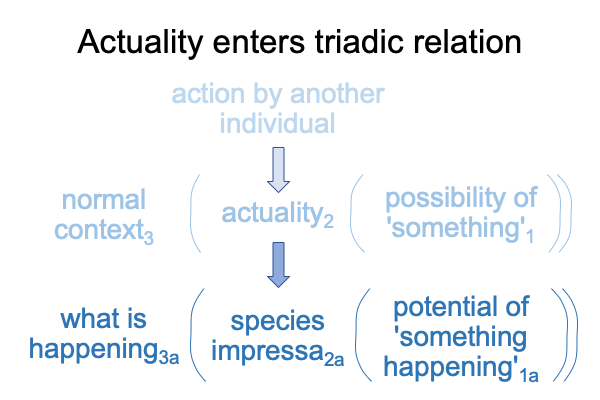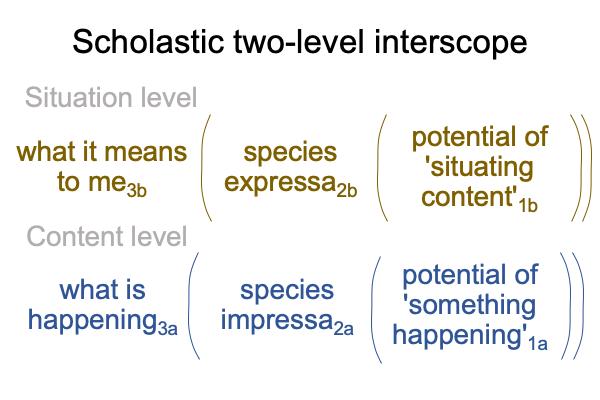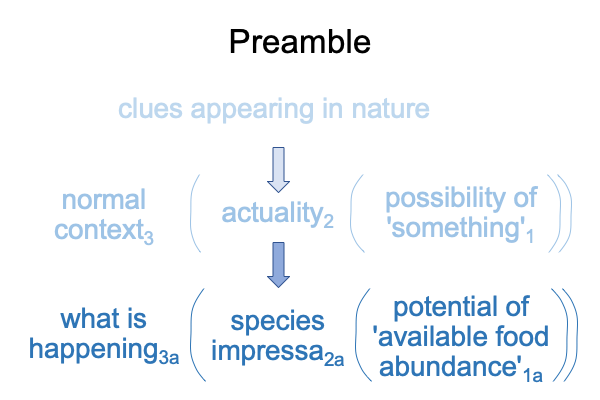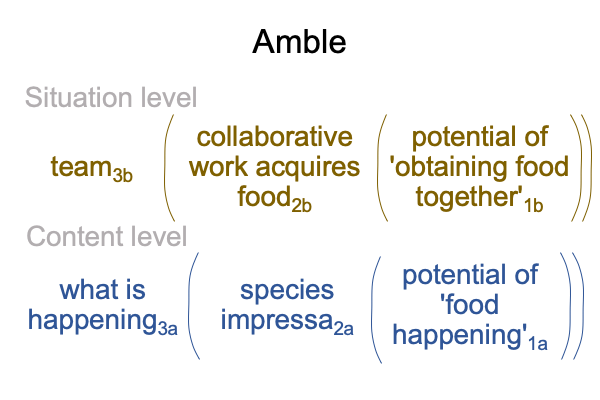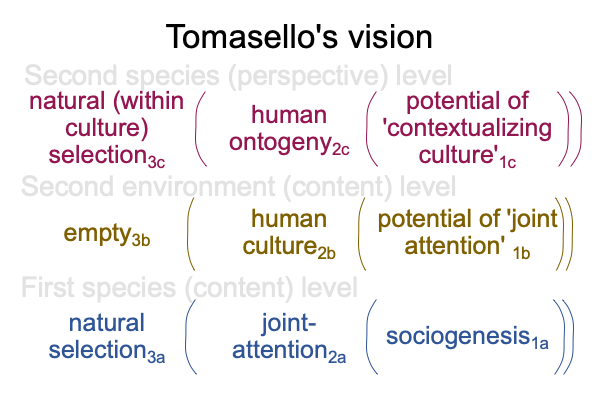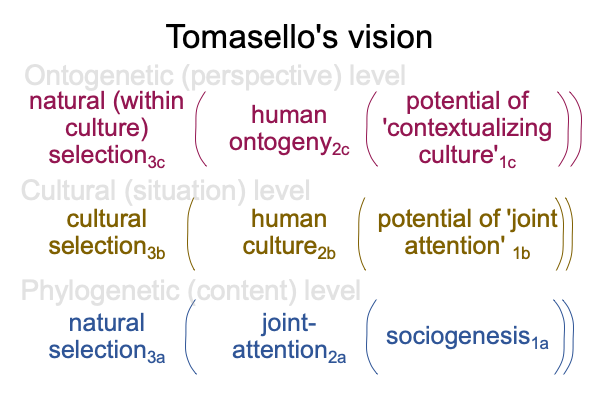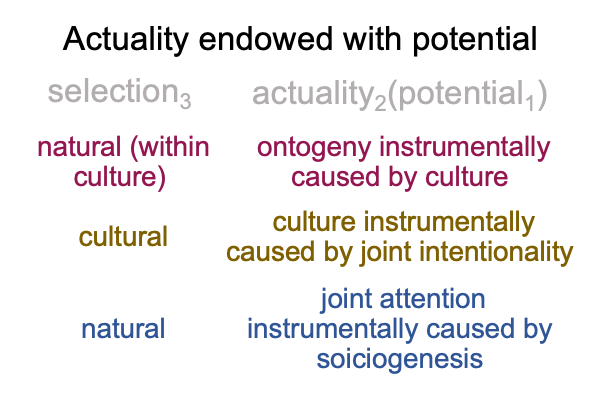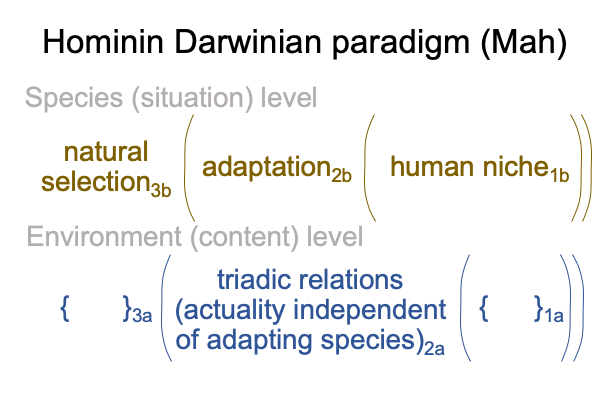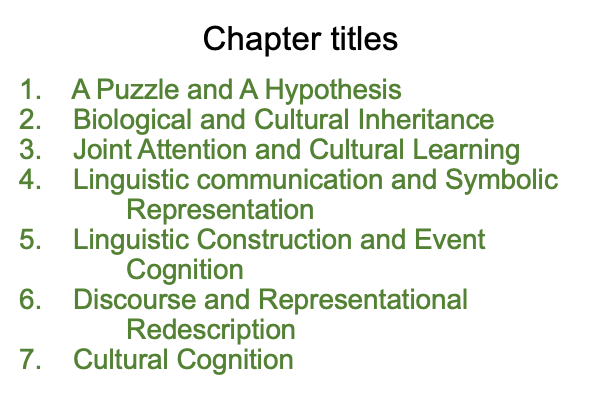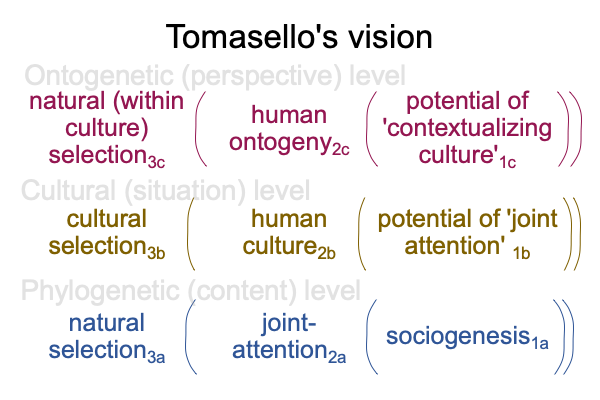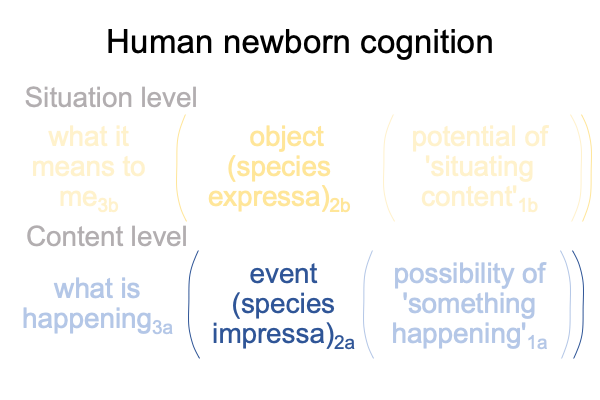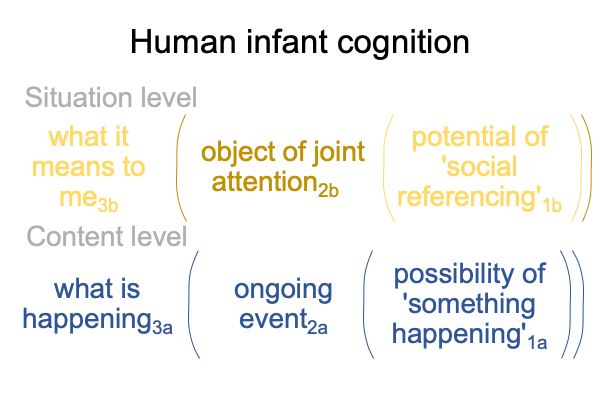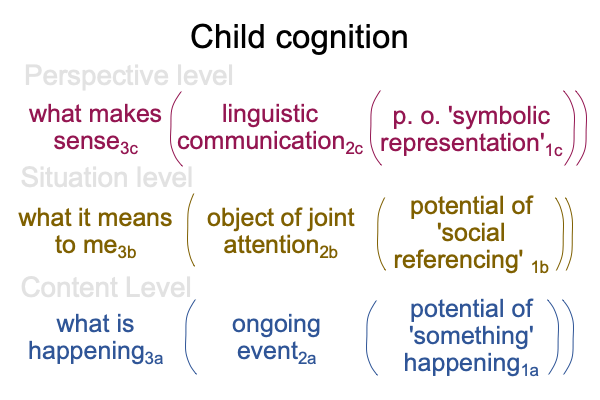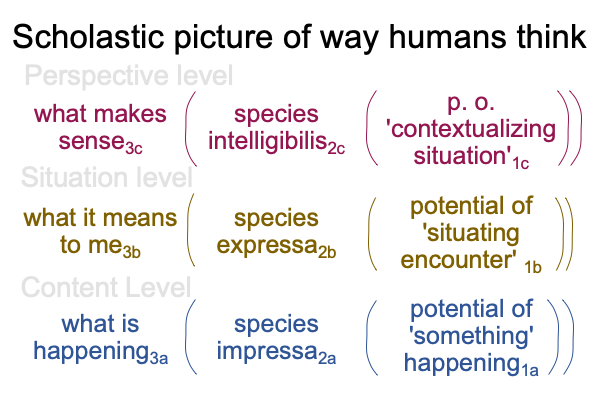Looking at Michael Tomasello’s Book (1999) “The Cultural Origins of Human Cognition” (Part 1 of 12)
0001 In 1999 AD, Michael Tomasello, then co-director of the Max Planck Institute for Evolutionary Anthropology in Leipzig, Germany, publishes the work before me (Harvard University Press, Cambridge, Massachusetts).
To me, this work marks the start of the author’s twenty year journey, culminating in a theory of human ontogeny, published in 2019. The word, “ontogeny”, refers to human development and associates to the human phenotype.
0002 What interests me in Tomasello’s journey?
As noted in Comments on Dennis Venema and Scot McKnight’s Book (2017) Adam and the Genome (available at smashwords and other e-book venues), “phenotype” and “adaptation” are not the same. Instead, these labels apply to distinct actualities that coalesce into a single actuality. One may call that single actuality, an individual, a species or a genus. One may also call that single actuality, “a mystery”.
I am interested in the natural history side of the mystery of human evolution. However, the genetic (or ontogenetic) side cannot be ignored. Plus, natural history cannot be reduced to genetics, or visa versa
0003 Chapter one of Tomasello’s book is titled, “A Puzzle and a Hypothesis”.
Of course, a puzzle is not a mystery. A puzzle can be resolved. A mystery cannot.
The puzzle starts with genetics. Geneticists have examined the DNA of chimpanzees, bonobos and humans and predict that the last common ancestor lives 6 or 7 Myr (six or seven million years ago).
In contrast, physical anthropologists (natural historians) propose the fossil record noted in the following figure. With terminological sleight of hand, they refer to human ancestors as “hominins”, even though the old term for any bipedal primate (ape or human) is “hominid”.

0004 Hmmm. Does the puzzle concern time?
According to genetics, the last common ancestor (LCA) between chimpanzees and humans lives 7 Myr (millions of years ago). But, little significant shows up in the fossil record until 4 Myr. Our lineage obviously evolves feet first. As it turns out, starting around 5 Myr, the extent of tropical vegetation in Africa decreases due to desiccation. Bipedality is an adaptation to mixed forest and savannah.
0005 The fossil record provides other clues, especially stone tools.
The first stone tools are Oldowan. Oldowan stones tools are constructed on site. They are used to scrape meat off of bone and to crack long bones (that are full of fatty marrow).
Acheulean stone tools appear later in the archeological record. Acheulean stone tools are made beforehand and carried with some intention in mind. They have the appearance of a giant tooth. Notably, Acheulean stone tool technology remains unchanged for over a million years. Innovations in stone-tools follow the domestication of fire.

0006 Surely, these two tables are puzzling. In the first, the fossil record pertains to changes in hominin phenotypes. In the second, the fossil record pertains to hominin adaptations, but these adaptations are not phenotypic. They are artifacts. Are these adaptive artifacts cultural? Are they behavioral? I wonder, “Do the words, ‘culture’ and ‘behavior’, capture the matter and the form of these artifacts?” It is as if an adaptation recognizes matter and generates form.
0007 What is the nature of the adaptation that maintains (and occasionally changes) artifacts, as if these artifacts are phenotypes?
Tomasello suggests that an adaptation is a novel form of social cognition. Our lineage adapts to a new way of thinking about one another, eventually allowing sociogenesis, new styles of learning and cultural evolution.
0008 Tomasello proposes that there is one adaptation that potentiates subsequent adaptations.
Razie Mah proposes that there is one ultimate niche for our lineage. The hypothesis is presented in the e-book, The Human Niche (available at smashwords and other e-book venues).
0009 Do Tomasello (in 1999) and Mah (in 2018) propose that our lineage is defined by the same adaptation… er… niche?
What is the difference between an adaptation and a niche?
To these questions, I next attend.

